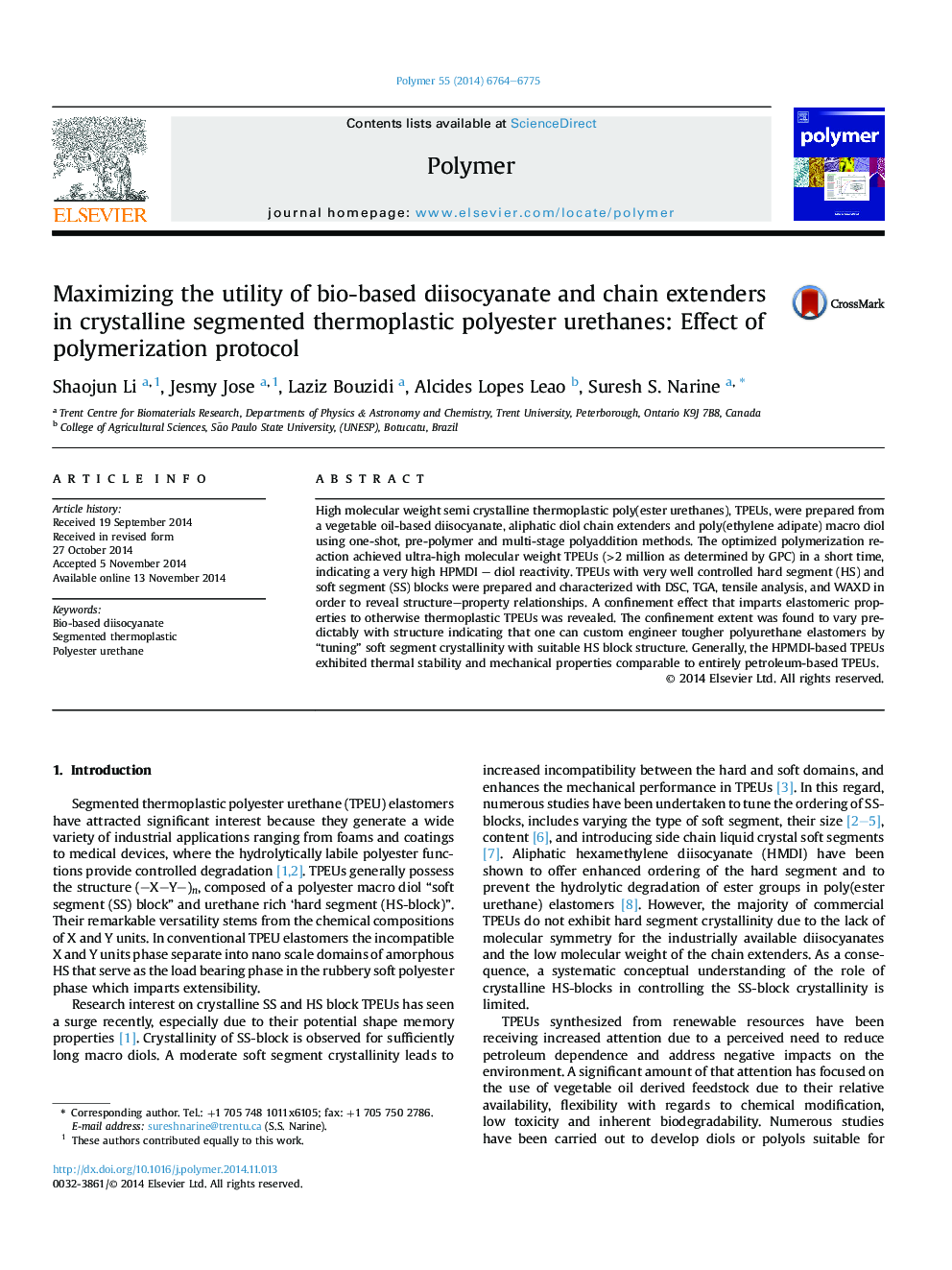| Article ID | Journal | Published Year | Pages | File Type |
|---|---|---|---|---|
| 5180804 | Polymer | 2014 | 12 Pages |
â¢High reactivity of a vegetable oil based diisocyanate demonstratedâ¢TPEU prepared using one-shot, prepolymer and multistage polyaddition methodsâ¢Very well-controlled segments TPEU with ultra-high molecular weight achievedâ¢Predictable structure-property relationships and tunable confinement effect uncoveredâ¢Thermal and mechanical properties compare very favorably with petroleum-based TPEU
High molecular weight semi crystalline thermoplastic poly(ester urethanes), TPEUs, were prepared from a vegetable oil-based diisocyanate, aliphatic diol chain extenders and poly(ethylene adipate) macro diol using one-shot, pre-polymer and multi-stage polyaddition methods. The optimized polymerization reaction achieved ultra-high molecular weight TPEUs (>2 million as determined by GPC) in a short time, indicating a very high HPMDI - diol reactivity. TPEUs with very well controlled hard segment (HS) and soft segment (SS) blocks were prepared and characterized with DSC, TGA, tensile analysis, and WAXD in order to reveal structure-property relationships. A confinement effect that imparts elastomeric properties to otherwise thermoplastic TPEUs was revealed. The confinement extent was found to vary predictably with structure indicating that one can custom engineer tougher polyurethane elastomers by “tuning” soft segment crystallinity with suitable HS block structure. Generally, the HPMDI-based TPEUs exhibited thermal stability and mechanical properties comparable to entirely petroleum-based TPEUs.
Graphical abstractDownload high-res image (246KB)Download full-size image
